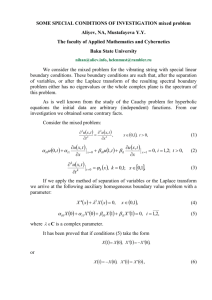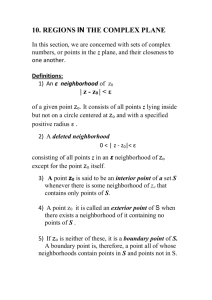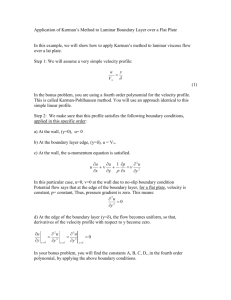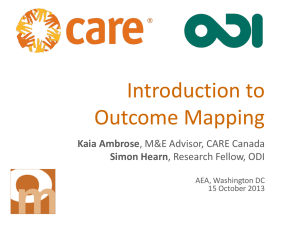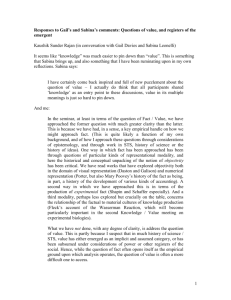The late Susan Leigh Star, an enormously influential sociologist of
advertisement
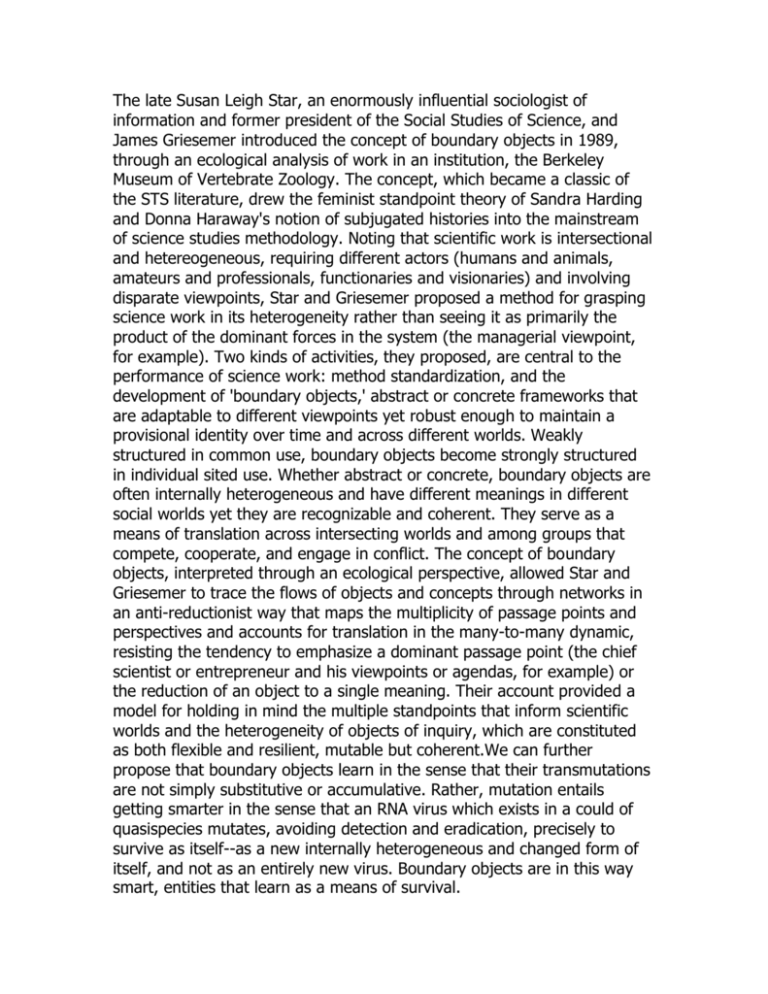
The late Susan Leigh Star, an enormously influential sociologist of information and former president of the Social Studies of Science, and James Griesemer introduced the concept of boundary objects in 1989, through an ecological analysis of work in an institution, the Berkeley Museum of Vertebrate Zoology. The concept, which became a classic of the STS literature, drew the feminist standpoint theory of Sandra Harding and Donna Haraway's notion of subjugated histories into the mainstream of science studies methodology. Noting that scientific work is intersectional and hetereogeneous, requiring different actors (humans and animals, amateurs and professionals, functionaries and visionaries) and involving disparate viewpoints, Star and Griesemer proposed a method for grasping science work in its heterogeneity rather than seeing it as primarily the product of the dominant forces in the system (the managerial viewpoint, for example). Two kinds of activities, they proposed, are central to the performance of science work: method standardization, and the development of 'boundary objects,' abstract or concrete frameworks that are adaptable to different viewpoints yet robust enough to maintain a provisional identity over time and across different worlds. Weakly structured in common use, boundary objects become strongly structured in individual sited use. Whether abstract or concrete, boundary objects are often internally heterogeneous and have different meanings in different social worlds yet they are recognizable and coherent. They serve as a means of translation across intersecting worlds and among groups that compete, cooperate, and engage in conflict. The concept of boundary objects, interpreted through an ecological perspective, allowed Star and Griesemer to trace the flows of objects and concepts through networks in an anti-reductionist way that maps the multiplicity of passage points and perspectives and accounts for translation in the many-to-many dynamic, resisting the tendency to emphasize a dominant passage point (the chief scientist or entrepreneur and his viewpoints or agendas, for example) or the reduction of an object to a single meaning. Their account provided a model for holding in mind the multiple standpoints that inform scientific worlds and the heterogeneity of objects of inquiry, which are constituted as both flexible and resilient, mutable but coherent.We can further propose that boundary objects learn in the sense that their transmutations are not simply substitutive or accumulative. Rather, mutation entails getting smarter in the sense that an RNA virus which exists in a could of quasispecies mutates, avoiding detection and eradication, precisely to survive as itself--as a new internally heterogeneous and changed form of itself, and not as an entirely new virus. Boundary objects are in this way smart, entities that learn as a means of survival. See Star, Institutional Ecology, 'Translations' and Boundary Objects: Amateurs and Professionals in Berkeley's Museum of Vertebrate Zoology, 1907-39 (1989, co-written with James Griesemer) and This is Not a Boundary Object: Reflections on the Origin of a Concept (2010). By Lisa Cartwright


